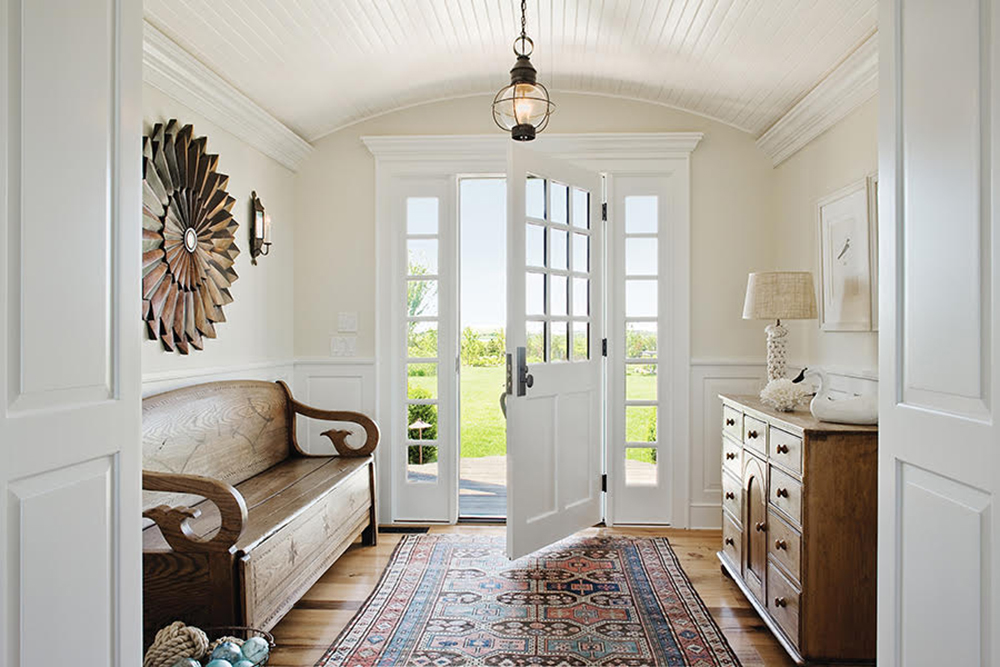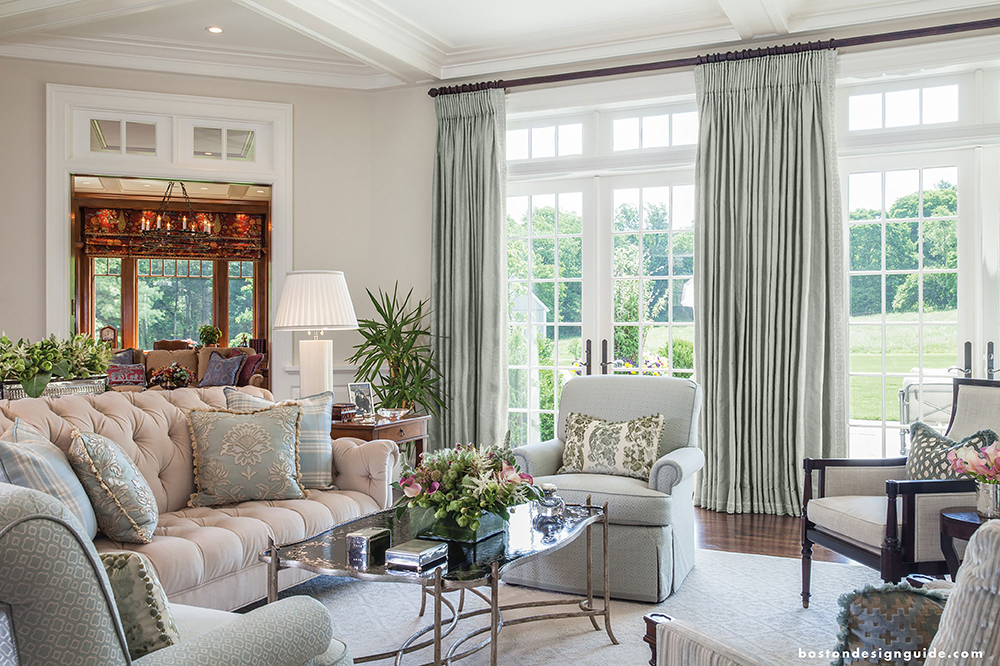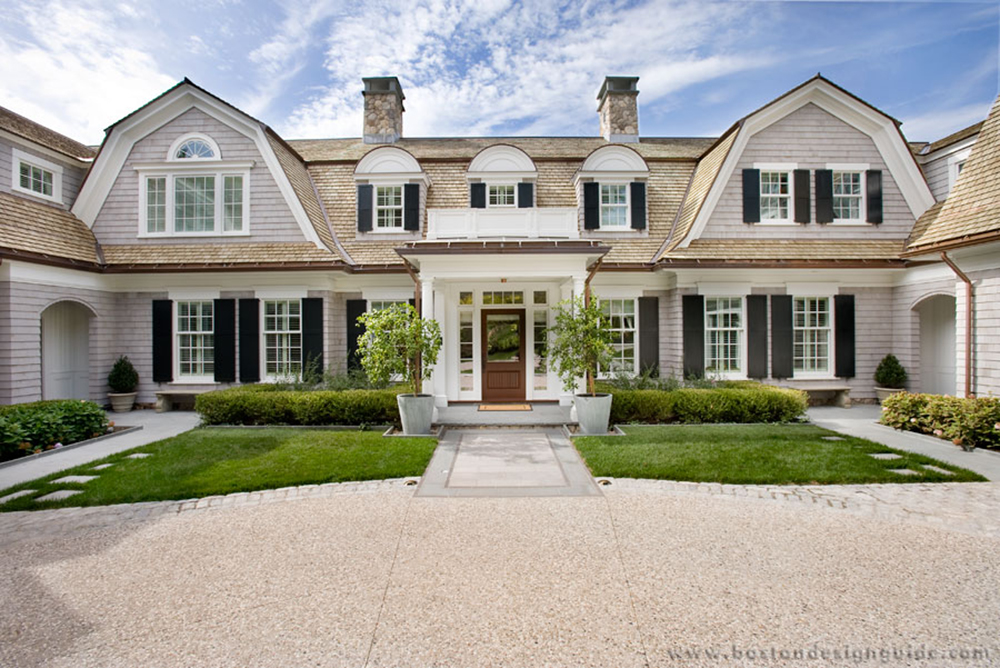March 20, 2017 | Sandy Giardi

Home Décor Tips, Architectural Upgrades and How to Prep Your Home for Sale: A Recap
Should you renovate or move? A panel discussion and Q&A, hosted by Boston Design Guide and Black Horse Real Estate, Inc. March 9, brought in a team of experts to help homeowners answer that very question.
Barbara Kotzen of Kotzen Interiors, Jan Gleysteen of Jan Gleysteen Architects, Jon Wardwell of J.W. Construction, Michael Wasser of Gregory Lombardi Design and Jody Trail, an interior designer for Wayland Home Center, revealed tips from the trade on the latest home décor and design trends, easy ways to refresh your space, exterior and landscape facelifts, as well as expert advice on how to bring out the best in your property when selling, increase your home’s value, and which home improvements bring the best return on investment.
For those of you who couldn’t attend, here are some highlights….

Interior Design by Kotzen Interiors; Architecture by Catalano Architects; Built by J.W. Construction; Landscape Architecture by Gregory Lombardi Design; Landscape Contracting by R.P. Marzilli & Company; Framer & Exterior Carpentry by Ares Structures; Stonework by Cumar, Inc.; Art Consulting by Jules Place; Sam Gray Photography
If You’re Loving It….
Repaint. A fresh coat of paint does wonders for both interiors and exteriors. Don't be afraid of color and choose tones that you like over what’s trendy. As for your door? Go gorgeous and glossy, and don’t skimp on the paint: Fine Paints of Europe, C2 or Farrow & Ball are the pro’s choices.
Add texture. Textures and patterns add visual interest and create warm, personalized rooms. Wall coverings can bring this new dimension and so can accessories, so swap up your pillows. The one place you might want to smooth your surface? The ceiling, if you’re in an older home. We were told it’s very reasonable to trade in that popcorn or textured ceiling for a cleaner finish.
Upgrade the master bath. It’s easier than ever to revamp the bath, refresh your fixtures, retile or update your vanity. There are hundreds of new and interesting tiles on the market to give you a sparkling new look. (Plus, you can tile over tile—who knew?—said the pros). Vanities have also reached new counter heights, thankfully, which are easier on your back.
Switch up the lights. Recessed lighting, new pendants and standing lamps are another great way to freshen up the home, said many on the panel. Feel free to mix up your style; a transitional or modern light fixture against traditional interiors can be dazzling.
Add a mudroom. A definite plus in New England, the construction expert said many are putting in mudrooms complete with cubbies and storage space. It’s easy to do in most homes, plus it leaves your other entryways clutter-free.
Bump out the kitchen. The architect on hand advocates bumping out the kitchen to give you both a sunny breakfast nook and gain valuable floor space. This relatively small renovation can give you the square footage you need to create an open-concept kitchen and finally get that center kitchen island.
Elevate the entrance. Apparently you don’t have to get what you get… Enlist an architect to create a portico above your front door. Complete with columns and molding, this instantly elevates your home’s facade and gives ceremony to your threshold. (Plus, later, when you’re looking to sell, it adds curb appeal).
Play up the indoor/outdoor connection. Landscape architects are creating outdoor rooms, terraces, fire pits and more for those looking to get more out of the outdoors and enhance their lifestyles. The sky’s the limit for outdoor chefs; you can have a grill deck or a full kitchen worked into your masonry, complete with a pizza oven. If you’d love a pool by all means put one in, but do it because it will buy you a slice of happiness not a better resale value.

Built by JW Construction, Inc.; Architecture by Colin Smith Architecture; Landscape Architecture by Timothy Lee landscape design; Landscape by RP Marzilli & Company; Photography by Shelly Harrison.
If You're Listing It….
Stage a room or rooms. Numbers show that homes on the market with rooms that have been staged, sell faster. If it’s the living room that’s your home’s main attraction (most are) make the investment there. Or, showcase what you feel is your home’s greatest selling point. If your porch with enviable views is a draw, staging can make it a showstopper. DIY tip? Get a great new area rug for the kitchen.
Fine-looking foyers and halls. The panelists confirmed that first impressions are crucial. Clear the clutter from the hallway and beautify your foyer to ensure you impress buyers when they first step foot in your house.
Landscape. Clean, manicured grounds immediately say that a home is well kept. Tame your overgrown shrubbery, and replace damaged bushes and ornamental trees with new versions that are healthy and nearing maturity. Landscape lighting is a great extra touch, as it gives your grounds a little drama and looks inviting.
Curb appeal. Many prospective buyers will keep on driving if they don’t like the looks of your home from the street. Fill some container boxes with blooms, make sure your front door has a fresh coat of paint and don’t forget the mailbox—it’s a telltale sign that you sweat the small stuff.
Replace your roof. If your roof is over 20 years old, replace it with a new one with architectural shingles. Your home will have a fresh new look and it’s a massive draw for buyers. Adding a new roof ranks number one in buyer appeal—many times it helps seal the deal—and it brings a ROI of 105%, according to a 2015 Remodeling Impact Report.
Insulate your attic. As heat rises and escapes from the attic upgrading your insulation is a must. This energy-conserving measure not only helps keep your home cozy and comfortable, it offers the single best ROI of any home improvement—you’ll recoup your costs and then some at resale.
Don’t overspend on renovations. If you’re remodeling to sell, says Black Horse Real Estate, a good (and conservative) rule of thumb for investing is between 15-20% of your home’s value. If you go well above that, you’ll risk pricing your home out of the neighborhood standard and beyond what the market can tolerate.
(Top photo: Interior Design by Carter & Company)


Add new comment